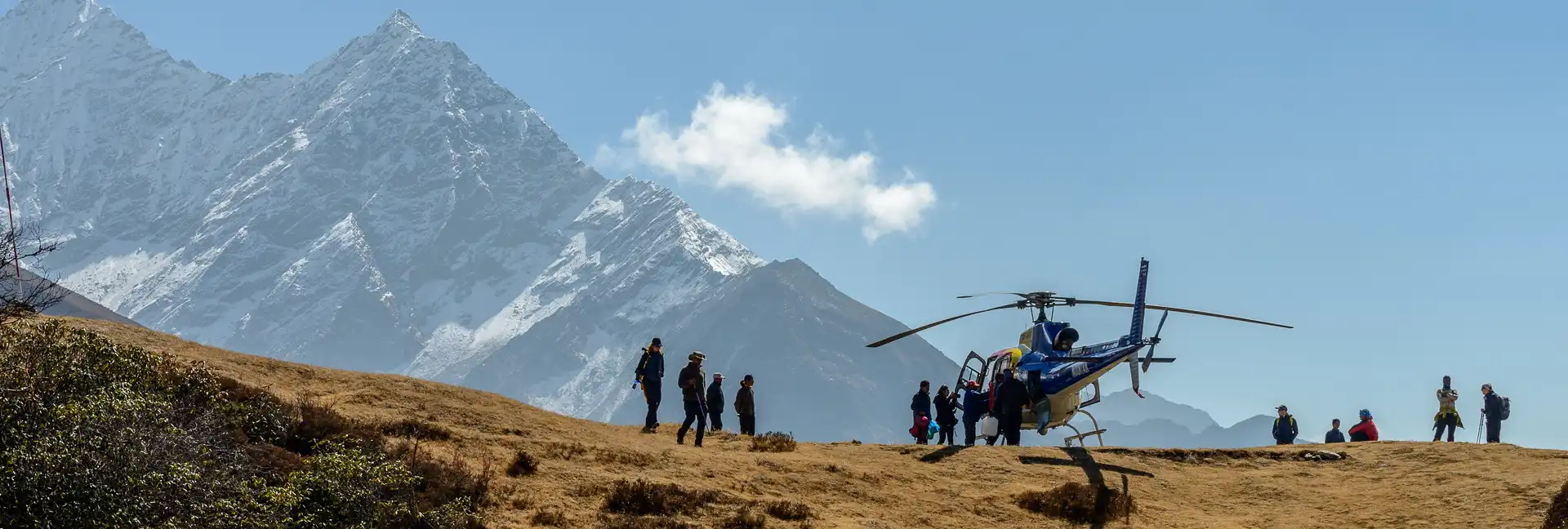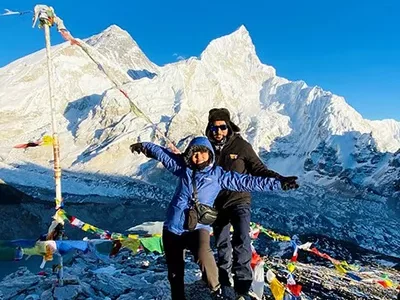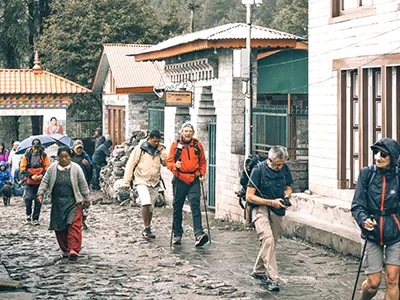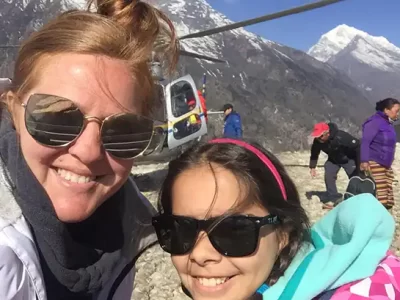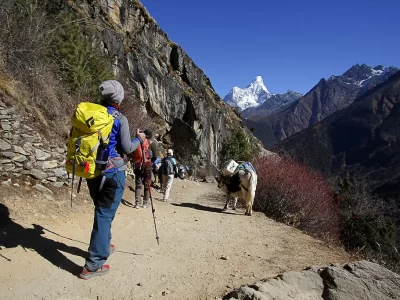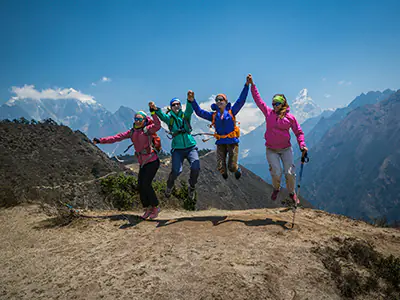Everest Base Camp (EBC) is known as one of the most sought for trekking destinations in the world, and it attracts thrill-seekers who are excited to see the top mountain on this planet. Nonetheless, the great height at which trekkers hike presents some serious challenges, including the likelihood of developing altitude sickness. Every trekker, regardless of physical condition or previous high-altitude experience, should be aware of the Everest Base Camp altitude sickness discussed in this article.
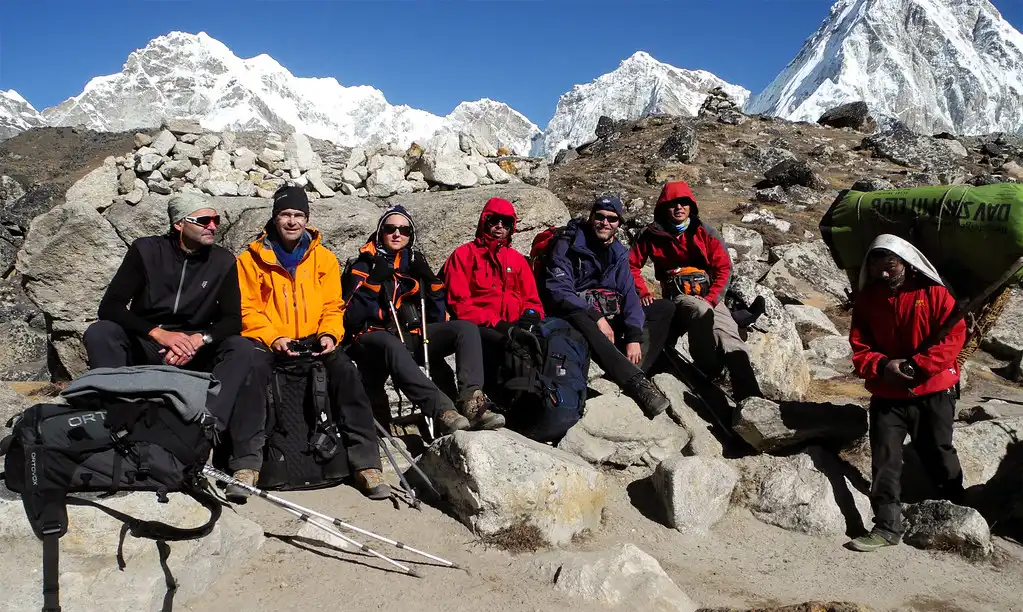
Many types of altitude sickness can occur in the Everest base camp, starting from light forms such as headache and fatigue, often referred to as altitude sickness, through serious illnesses like high altitude cerebral edema (HACE) or pulmonary edema (HAPE).
Please make sure to note these first signs before taking any action. Without rapid intervention, Healthy people can have varying symptoms of Sopite syndrome, from vertigo to impaired sleeping patterns such as insomnia. Consequently, to make this Everest base camp safe and successful, hikers must remain informed and plan well ahead of time.
Everest Base Camp Trek
Luxury Everest Base Camp Trek
Everest Base Camp Trek with Helicopter Return
What is Altitude Sickness?
Altitude sickness is an illness that strikes when you ascend to high altitude too quickly. Altitude sickness or acute mountain sickness (AMS) affects mountaineers, hikers, skiers, or travelers at high altitudes above 2,500 meters (8,000 ft). It occurs when the body cannot adjust to the lower oxygen concentration found at these heights and involves various complications due to this.
Acute Mountain Sickness (AMS)
The mildest and most common type of AMS manifests in symptoms that resemble those of an ordinary hangover: headache, nausea, dizziness, tiredness, lack of desire for food, and sleep disorders, which usually start within hours of ascending to elevated areas and at times escalate in darkness.
High Altitude Pulmonary Edema (HAPE)
HAPE is a severe and potentially deadly form of altitude sickness that causes fluid to build up in the lungs, leading to extreme tiredness, breathlessness at rest or with exercise, continuous dry coughing, and increased tachypnoea. When it becomes severe, coughing produces pink, frothy, or blood-stained sputum, characterizing the disease.
High Altitude Cerebral Edema (HACE)
HAPE causes brain swelling as a result of fluid leakage, making it the most dangerous form of altitude sickness. Headaches, ataxia (loss of coordination), weakness, visual changes, confusion, and diminished thought processes are the usual symptoms of HACE. Actually, HACE can kill within a few hours, so one should take emergency measures such as respiring in oxygen.
Causes and Symptoms of Altitude Sickness
Ascending too rapidly to high altitudes without allowing the body sufficient time to acclimatize causes altitude sickness. This swift ascent reduces the oxygen in your bloodstream, leading to symptoms of AMS, HAPE, or HACE.
Symptoms of Altitude Sickness include:
General Symptoms: These include headaches, dizziness, nausea, vomiting, fatigue, and loss of appetite.
HAPE Symptoms: Symptoms cover breathlessness at rest, a persistent cough producing white or pink frothy sputum, and chest tightness.
HACE Symptoms: They involve an altered mental state, confusion, loss of coordination, staggering, and hallucinations.
Risk Factors for Altitude Sickness
Understanding the risk factors associated with altitude sickness proves crucial for anyone planning to ascend to high altitudes, as these factors can significantly impact health and experiences. Below, we outline the key risk factors that increase the likelihood of developing altitude sickness.
How Altitude Sickness Affects Each Person Differently
Different individuals have different levels of vulnerability to altitude sickness; some people can develop adverse symptoms, while others appear unaffected in adverse situations. Genetic traits, physical conditions, and previous exposures to high altitudes link to this variation.
Consequently, individuals who have ever experienced the condition before are more likely to suffer from it once more. Individuals living at or near sea level are at a higher risk compared to those residing at higher elevations.
Factors that Increase the Risk
Several key factors heighten the risk of developing altitude sickness:
Rapid Ascent: Ascending too quickly to high altitude stands as the most significant risk factor. Without a gradual ascent, the body lacks sufficient time to adapt to changing oxygen levels, thus increasing the likelihood of altitude sickness.
Lack of Acclimatization: Proper acclimatization requires spending several days at moderate altitudes to adjust to the decreased oxygen before ascending further. Neglecting acclimatization steps can trigger severe altitude sickness.
Exertion: Exerting oneself excessively during the initial days of the trek can worsen the onset of altitude sickness. Maintaining a moderate pace helps the body adjust more comfortably.
Previous Episodes: Experiencing altitude sickness in the past makes one more susceptible to future episodes under similar conditions.
Health Status: High altitude exposure can be made more risky by pre-existing health conditions such as heart and lung diseases. It is essential, therefore, that there should be consultations with a physician when a person is planning to trek in high-altitude areas.
Everest Base Camp Short Trek
Everest Base Camp Trek for Beginners
Jiri to Everest Base Camp Trek
Everest Base Camp Altitude Sickness Prevention Strategies
While trekking, altitude sickness can be avoided by having a strategic plan and putting into practice measures like acclimatization, adherence to the climb high, sleep low rule, a slow rate of ascension, as well as hydration and nutrition management that is careful. They are very important in ensuring safety in assisting hikers to become accustomed to higher altitudes.
Importance of Acclimatization Days in the Trek Itinerary
It is very important to allow the body to adjust to high altitudes gradually. Therefore, it is significant to include acclimatization days in the trekking schedule.
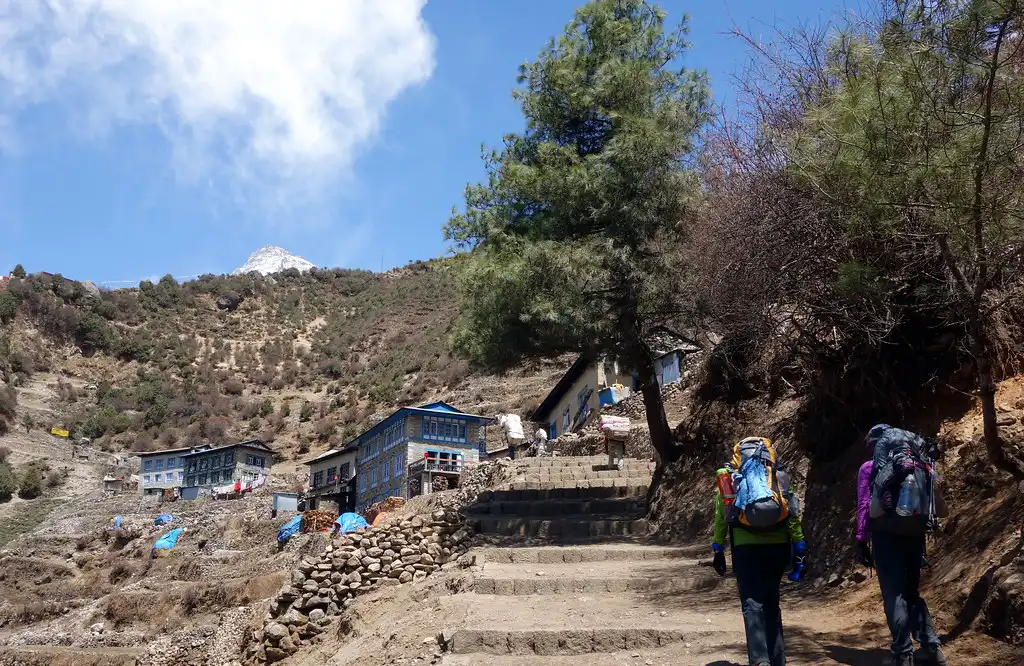
These particular days, trekkers engage in minimal physical activities at elevations that promote adaptation to reduced oxygen levels, hence reducing the chances of mountain sickness. These days also allow the hikers to have some good rest time even as they prepare themselves for tougher sections during the trek.
Tips on Ascending Slowly
Moving slowly while trekking will reduce the impact of high altitudes. Adhering to the climb high, sleep low rule, where one goes up during the day, then goes down for sleep, keeps people moving towards acclimatization hiking.
Once at rest, the system can utilize blood cell productivity to improve oxygen carriage. Sleeping at low altitudes assists in creating an oxygen gradient between the low and high altitudes, balancing this effect against the activity’s demands.
Hydration and Diet Considerations
Monitoring water is more important at higher altitudes, where water loss through respiration occurs more rapidly. Pedestrians should increase fluid intake and avoid caffeine and alcohol, which can aggravate dehydration.
Eating a diet rich in carbohydrates is also beneficial because carbohydrates are efficiently metabolized with less oxygen, providing sustainable energy in low-oxygen environments. Frequent small meals support consistent and supportive energy for adjustments in body length.
Recognizing and Managing Symptoms
Early symptoms of acute altitude sickness (AMS), like nausea, and more severe symptoms, such as shortness of breath from high altitude pulmonary edema (HAPE) and confusion from high altitude cerebral edema (HACE), are crucial indicators for trekkers’ safety and well-being. Promptly recognizing these signs is essential for ensuring the health of individuals exposed to high altitudes.
The signs are evidence of the body’s fight against exceeding heights; the best way to address them is to stop ascending and think about going down. If one goes down even a little, the stuffiness reduces considerably; nonetheless, it can result in death whenever there is no prompt descent in case the situation becomes worse or prolonged.
To manage altitude sickness, tourists can take medicine like Diamox (Acetazolamide), which increases oxygen intake by making the blood acidic and thus encouraging respiration, combined with oxygen supplementation in severe cases. Travelers should seek medical advice regarding the right drugs and treatment options that best suit their health status prior to departure and while trekking.
Personal Stories and Case Studies
Personal stories of hikers with mountain sickness often highlight the importance of early symptom recognition and prompt intervention. One hears of a hiker who initially ignores mild headaches and dizziness and subsequently encounters a case of severe HAPE symptoms.
These findings emphasize the critical importance of landing immediately at the first signs. Discussions about successful treatment and recovery included passengers who followed recommended stabilization programs, used prophylaxis effectively, or made the decision to disembark before the illness symptoms intensified.
This case study is a useful demonstration of the effectiveness of health care at high altitudes. Sharing these experiences provides new travelers with valuable lessons in the prevention and management of high-altitude illness, thus increasing the safety and enjoyment of high-altitude travel.
Safety Measures and Resources
Understanding the availability of hospitals and evacuation procedures is essential to ensure safety when trekking to Everest Base Camp (EBC). There are a number of medical facilities with doctors and paramedics stationed along the EBC route, especially during travel time.
These positions provide specialized treatment and the ability to manage illness cases of appropriate length. In severe cases requiring hospitalization, organizers should arrange for helicopter evacuation, which is facilitated quickly by local rescue services. However, pedestrians should be aware that such evacuations are dependent on clear weather conditions and can be costly.
Contact Information for Rescue Services
Before setting out on the trek, trekkers should get their current contact information from the rescue teams. Local guides or trekking firms usually give this data. In addition, embassies and consulates often have lists of suggested medical and rescue services for their nationals.
Advice on Travel Insurance
Obtaining travel insurance that covers high-altitude travel expenses is important for anyone planning for the Everest Base Camp trek. This insurance should explicitly cover emergency medical treatment, helicopter evacuation, and repatriation.
A thorough review of the design details is required to confirm that it meets the unique needs of high-altitude destinations. Hikers should ensure that their insurance policy is valid for altitudes up to 5,500 meters (EBC altitude) and covers the cost of all intended activities.
Conclusion
Preparing thoroughly for altitude sickness is crucial for anyone heading to Everest Base Camp. Such preparation enhances the trekking experience and protects your health. It’s vital to recognize the symptoms, understand the risk factors, and implement preventive measures to ensure a safe trek. Moreover, by respecting your physical limits and prioritizing safety, you can avoid serious complications and ensure that your adventure is both enjoyable and memorable. You can integrate these precautions into your trek planning to enjoy the majestic heights of Everest safely.
